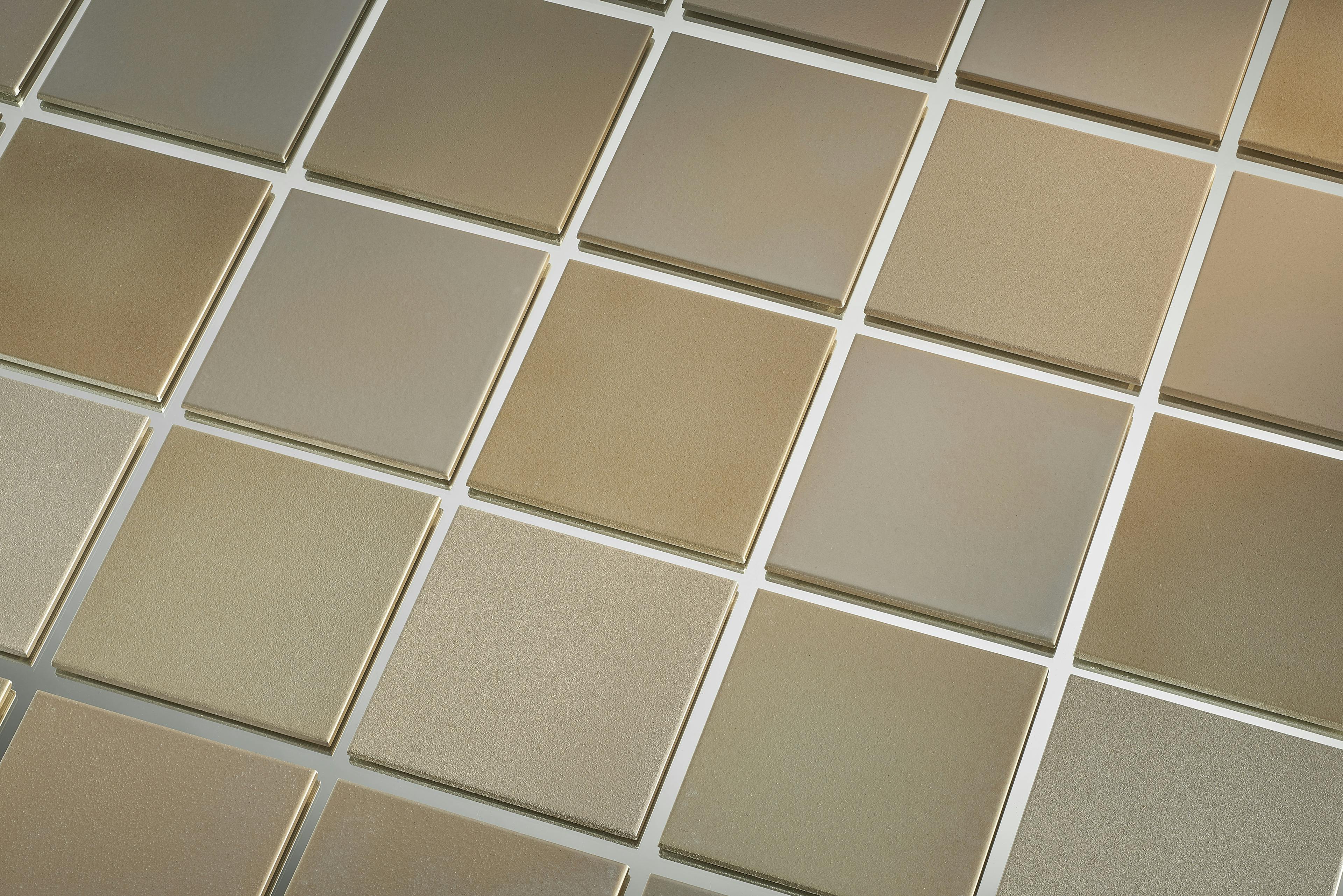
Ignorance is Bliss – In Conversation with Agne Kucerenkaite
Agne Kucerenkaite
What led you to start working with found or recycled materials? Was it a conscious decision or did it slowly manifest through your work?
During my studies, in 2015, I was chosen to partake in a three-month exchange program in Arita, Japan—one of the first sites to produce porcelain in Japan. Local materials such as Izumiyama rock, Shirakawa stone, and others, used in porcelain and glaze production, became the subject of my material research project. Upon returning to the Netherlands, I continued this methodology in my Ignorance is Bliss project. Ceramics are pure chemistry, with metal oxides serving as the main sources of color in ceramic glazes. Buying all these materials in shops would be dull, so naturally, I began exploring alternative sources of metals. This proved challenging, as such information cannot simply be found through Google. It took me quite some time, writing hundreds of emails, reaching out to people who might have knowledge in this area. Eventually, I received positive responses from soil remediation company, drinking water supply companies, and a project focused on cleaning the pollution from the Zinc factory in the Netherlands. They provided me with waste containing high concentrations of metals. Ceramics served as just a starting point; I also combined metal waste with glass and textiles at that time.
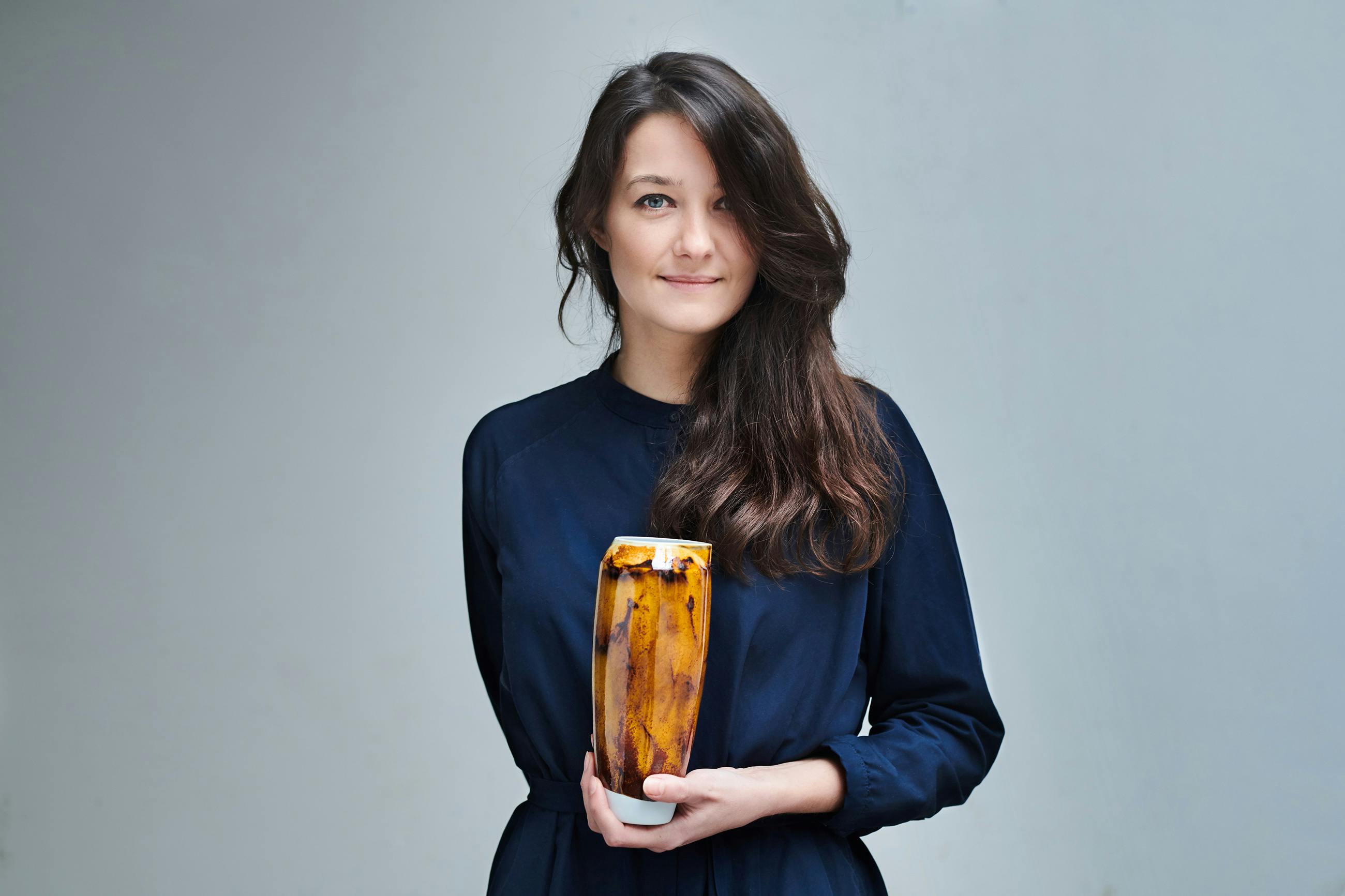
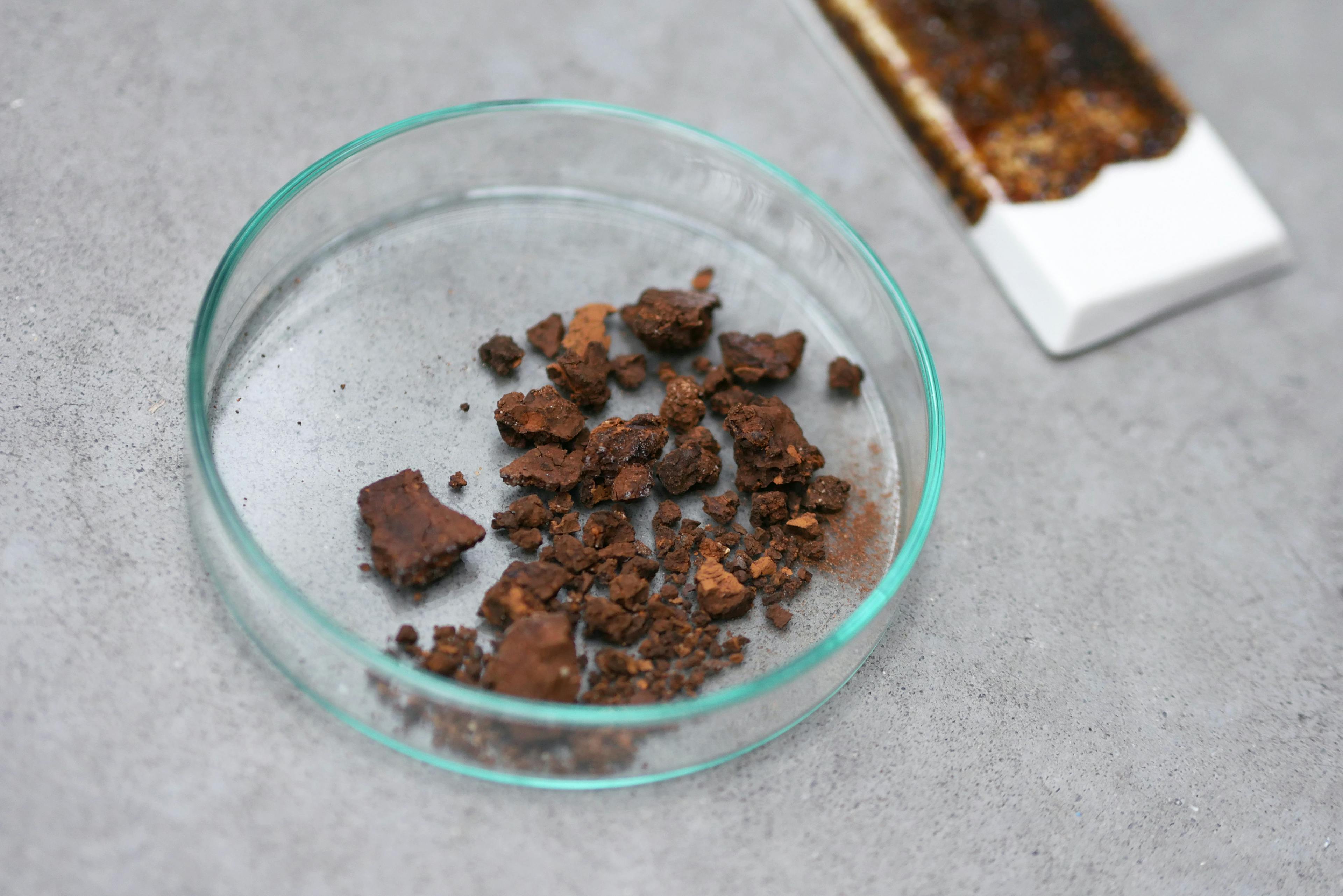
You have titled your project Ignorance is Bliss, how come so?
Since the onset of the Industrial Revolution, widespread ignorance and negligence have triggered environmental pollution on a monumental scale. Factories worldwide deal with disposing of tonnes of residues, prompting a pressing need for sustainable solutions. The research conducted on diverse waste streams demonstrates the potential for repurposing them creatively and integrating them into circular models. Ignorance is Bliss solutions either substitute factory-produced substances with waste or design entirely new formulations and materials. Remarkably, the irregularities within residues provide more dynamic and vibrant design objects. The resulting products will hopefully become a thread connecting past abuse with current reuse and future (blissful) awareness.
This project dates back to 2016 and the starting point was industrial metal waste – how has it evolved since?
The roots of Ignorance is Bliss trace back to 2016. It originated with the analysis of industrial metal waste sourced from various streams, repurposing it as pigment for ceramics, glass, and textiles, culminating in a limited-edition homeware collection. As time progressed, the project's scope expanded, delving into thorough theoretical and material research across a spectrum of waste materials, resulting in applications ranging from small-scale designs to architectural surfaces.
Ignorance is Bliss is now an umbrella term for ongoing experimentation and disruptive cross-disciplinary thinking, which gradually develops into techniques and products that can be applied as architectural building materials and interior surfaces. At the moment, the entire Ignorance is Bliss project consists of several diverse projects, each named after the respective waste stream: Amber Waste is Bliss, Biofuel Waste is Bliss, Stone Waste is Bliss, and so forth. This categorization reflects the versatile nature of the project, showcasing the breadth of materials being explored and repurposed in innovative ways.
Ignorance is Bliss is now an umbrella term for ongoing experimentation and disruptive cross-disciplinary thinking, which gradually develops into techniques and products that can be applied as architectural building materials and interior surfaces.
How does the rich context and technique of working with such materials impact the outcome of your practice?
One might argue that when waste is utilized, the very notion of it loses its negative connotation. I aim to redefine waste by granting it a new identity — one that embodies potential rather than constraints. Despite its prevailing stigma in society, waste can be envisioned and harnessed as a raw material filled with opportunities.
I always begin with the waste material itself, diving into its scientific data and exploring its potential applications with a broad perspective. The technique, while important, comes later in the process. While I do have considerable experience with ceramics, and many of my projects utilize this technique, my approach to material research is exhaustive, often taking years. I refuse to settle for initial results; my goal is to upcycle, transforming waste into something entirely unique and avoid of any immediate association with its original form. This dedication to thorough exploration and innovation ensures that the final material or product stands as a testament to both the value of the material and the creative possibilities it holds
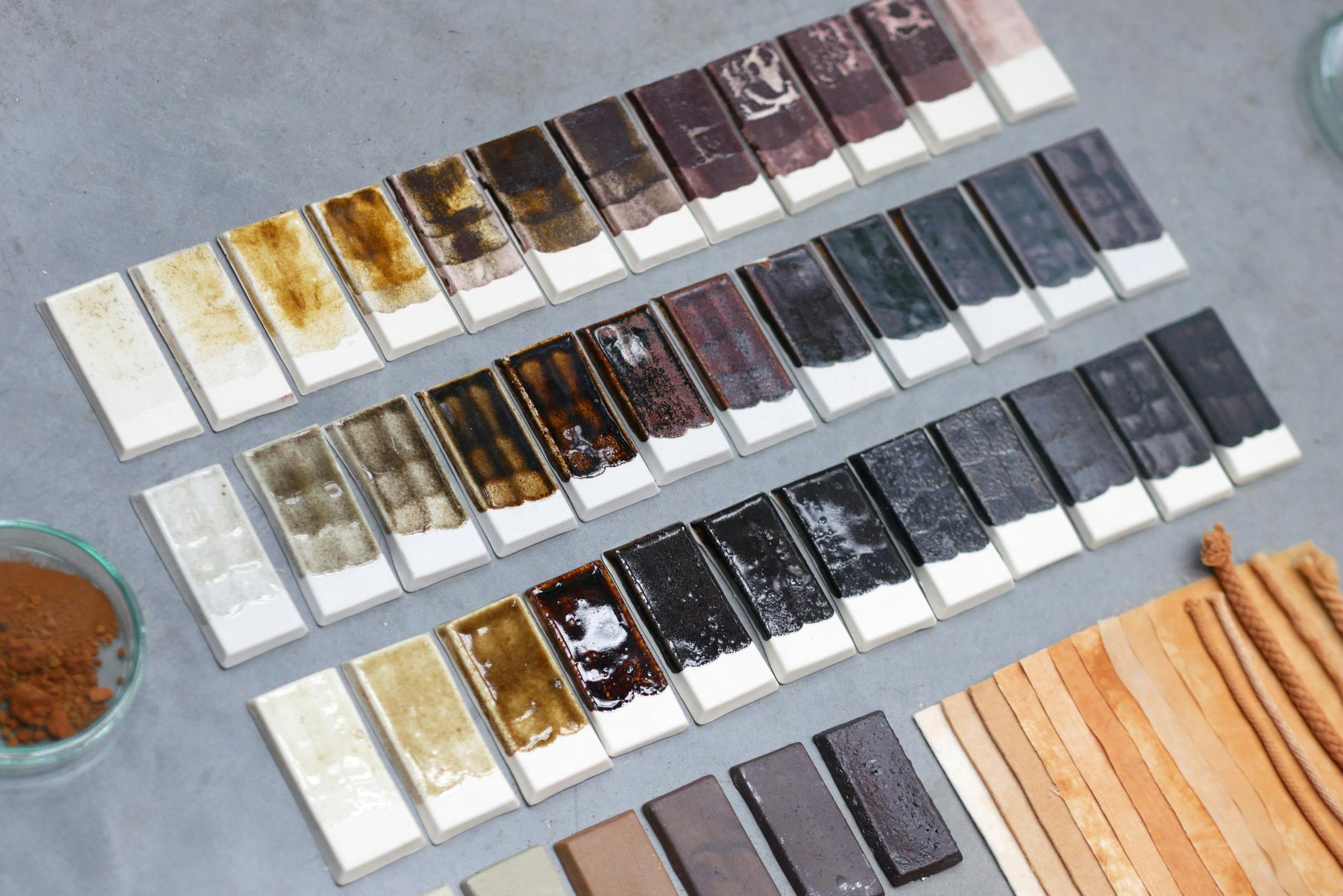
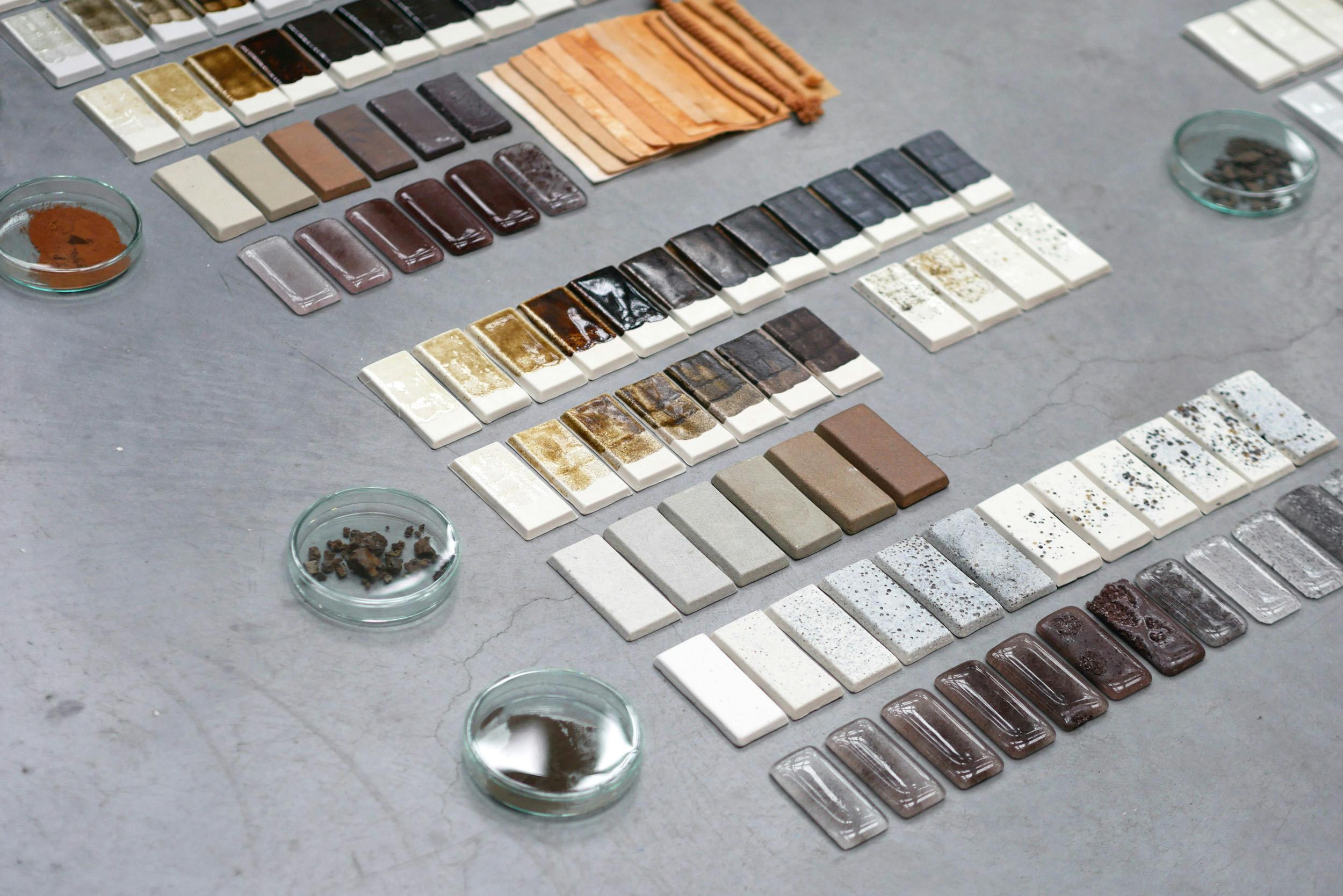
In the UK there is little education on the provenance of materials and their impact on our environment in the ceramic context. How does this compare with the Netherlands?
When I graduated in 2016, waste and sustainability were not prominent topics within the education system. Our focus was primarily on material exploration, with little emphasis on the provenance of materials and their environmental impact. The term "sustainability" didn't even arrive in our discussions at the time; it came a few years later when the topic began to trend. Consequently, working with waste felt like a natural progression for me from the outset.
However, I've observed significant changes since then. Sustainability has become a central theme in many educational programs, including ceramics, with a heightened awareness of the environmental implications of material choices. From what I gather, there are now numerous courses and initiatives addressing sustainability in a broader sense. I've frequently been invited to universities in the Netherlands to give lectures on these topics, indicating a growing interest and commitment to integrating sustainability into education.
It is clear using recycled materials, especially byproducts of industry, is at the heart of your project, what factors influence your choice of the waste material to investigate?
The choice of waste material to investigate is influenced by a multitude of factors, each situation presenting unique opportunities. Initially, I personally delved into industrial metal waste, driven by my own curiosity. As my exploration progressed, I recognized the potential in utilizing waste for dyeing textiles, causing me to seek out farmers cultivating plants suitable for this purpose.
Additionally, my upbringing in Lithuania, submerged in the folklore and mystique surrounding natural amber, inspired me to incorporate this waste material into my projects. Over time, as my visibility increased and I gathered recognition through known awards, companies began reaching out to collaborate, offering their waste materials for consideration.
However, I approach these opportunities with caution. Aware of the long-term commitment involved in each project, I meticulously evaluate the suitability of each waste material. Moreover, I consider the ethical implications of partnering with certain industries; for instance, I declined an offer to collaborate with the cigarette production industry due to my personal stance against supporting tobacco-related companies. Ultimately, my approach to selecting waste materials is holistic, taking into account not only their creative potential but also their alignment with my values and principles.
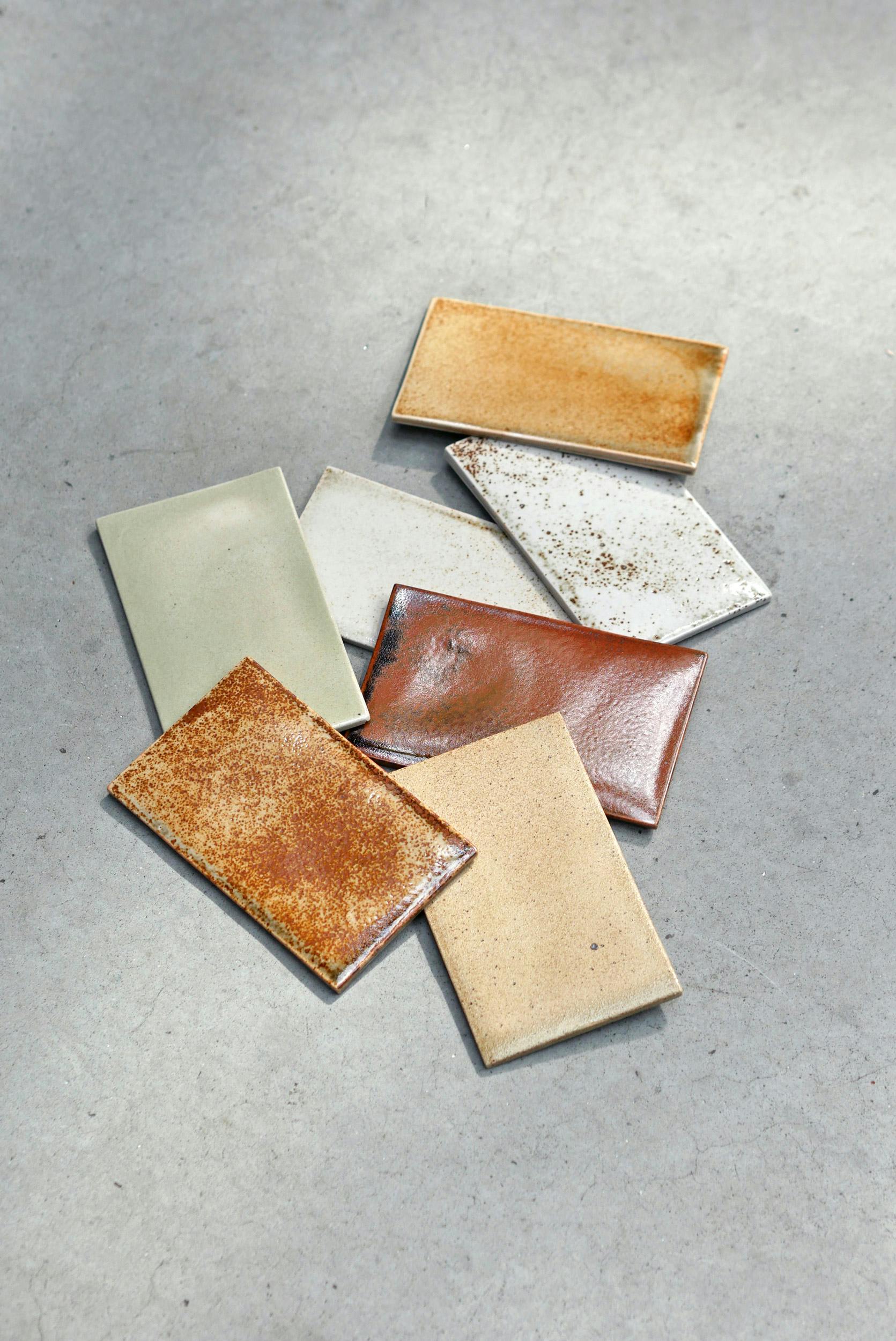
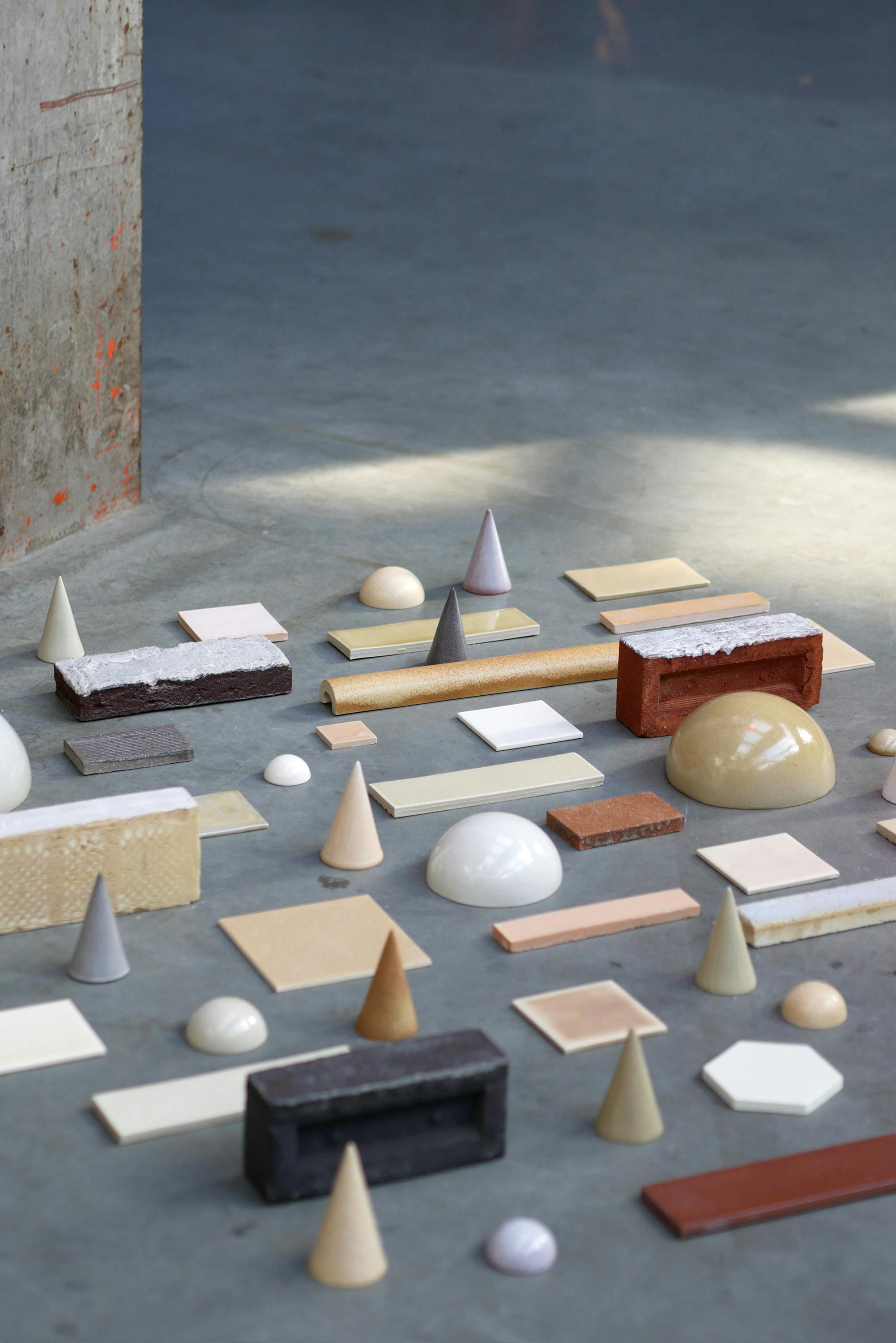
You mention that ‘Ignorance is Bliss adopts a holistic framework by a comprehensive study of materials and their footprint.’ How do you go about doing so and what impact does it have on the final project?
This approach involves multiple steps, each carefully executed to ensure both creative innovation and environmental responsibility. Initially, I start with a thorough investigation of potential waste materials, considering their origin, composition, and environmental impact. This exploration is guided not only by artistic curiosity but also by a commitment to sustainability and ethical sourcing. This phase often involves collaboration with experts in various fields to gain insights into the material's behavior and possibilities for repurposing.
All the Ignorance is Bliss projects are ongoing, with a focus on enhancing their environmental friendliness over time. Beyond the materials themselves, I am committed to addressing other sustainability challenges in the production process. For instance, while tiles contain a significant recycled content, concerns arise regarding their mounting and end-of-life phases due to the use of concrete-based fillers and synthetic glues. Moving forward, I plan to explore solutions to mitigate these issues, striving to ensure that every aspect of the project aligns with principles of circularity.
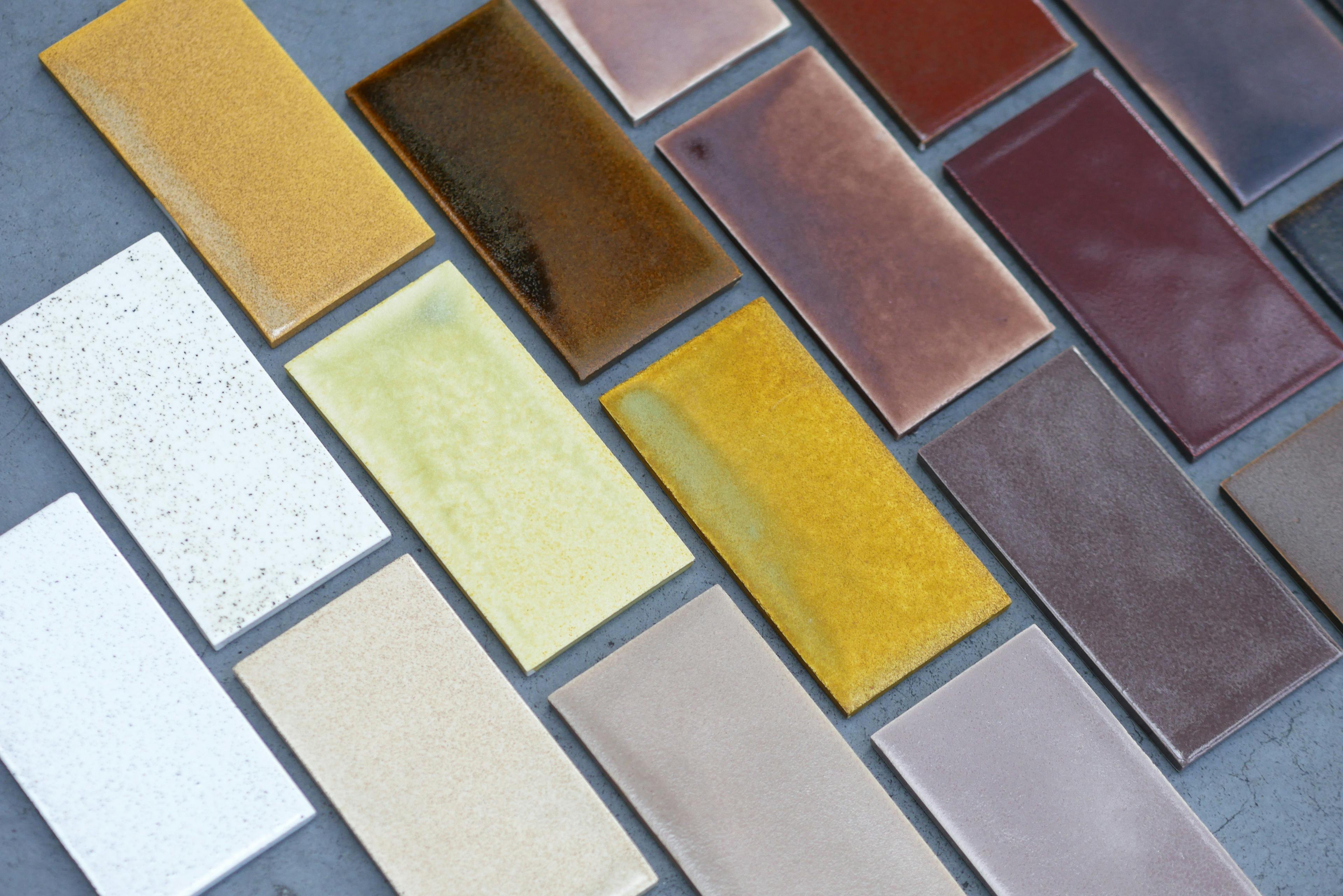
Do you feel that all of us as makers/designers need to transition to using local and recycled materials?
I genuinely believe in the importance of considering local and recycled materials in our creative practices. However, I also advocate against imposing pressure or stress on individuals to transition to these materials. While it's admirable to strive for sustainability, as individual creators, our impact can sometimes feel like a drop in the ocean. It's valuable to spread awareness and encourage sustainable practices, but I believe the motivation to transition should arise naturally. Creativity is a precious gift, and if someone's profession involves designing with plastics, there's room for that expression too. The key is to foster a culture where sustainable choices are encouraged and accessible, allowing each maker to navigate their own journey towards environmental consciousness.
You work with variety of ‘waste suppliers’ – how do you create these partnerships? What are the challenges infiltrating or collaborating with industry?
I often reach out to industries directly or may be contacted by them expressing interest in collaboration. While challenges inevitably arise, as is common in any project, I find that most industries are open-minded and enthusiastic about working together. In fact, I've observed a growing trend of companies actively seeking out such collaborations, driven by a shared commitment to sustainability and innovation.
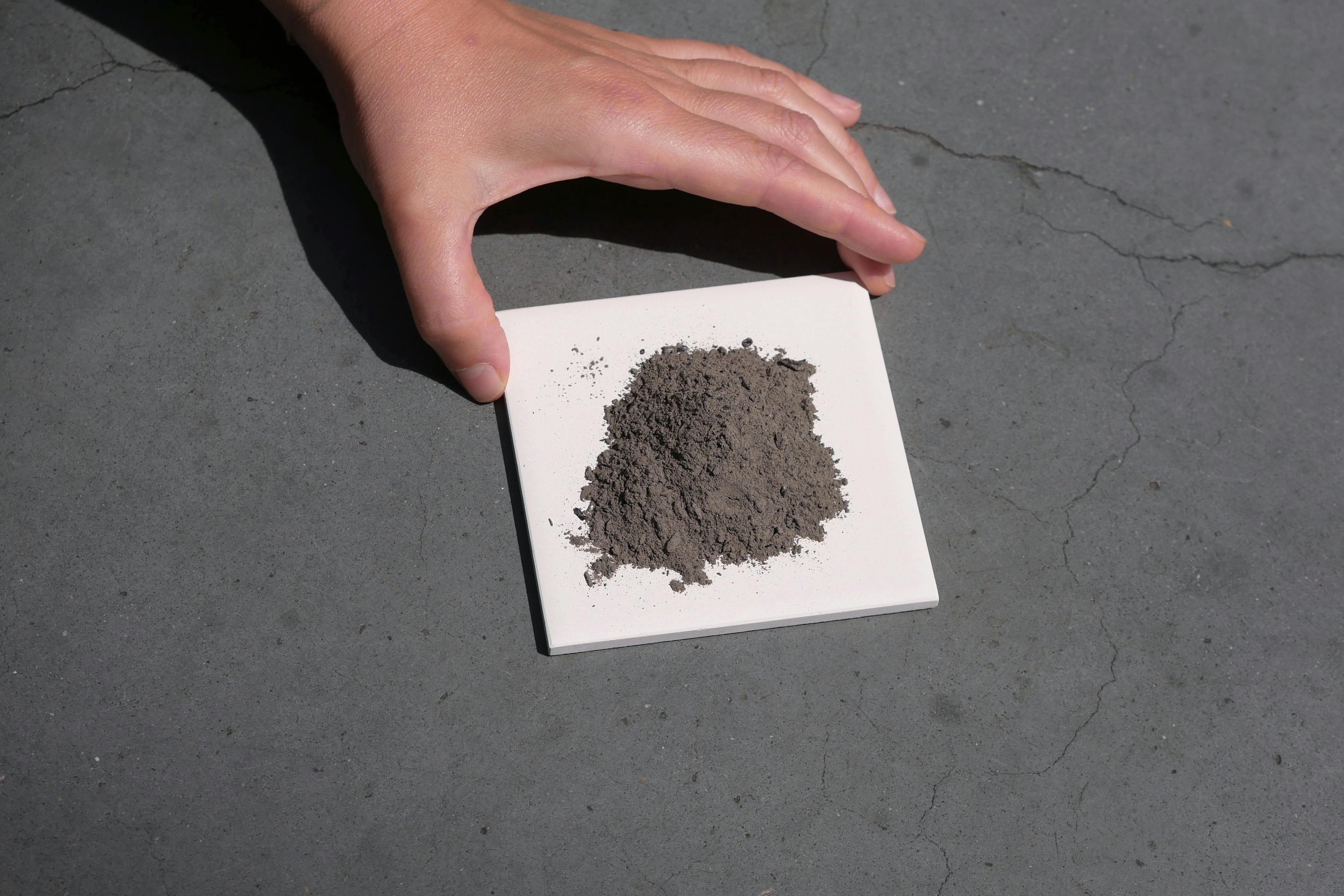
What methods do you follow when collecting and testing materials? Please share any practical tips such as steps you can take when testing clays and glazes. If there is one piece of beginner advice you could give, what would it be?
To illustrate, let's delve into the Ignorance is Bliss ceramic tableware and tiles project: metal waste arrives in the form of sludge, often wet. This mixture has high concentrations of metals and organic matter. While no extraction process is necessary, the sludge undergoes meticulous preparation, including drying, milling, and sieving, to make it suitable for use as a pigment. Once transformed into powder, it can be integrated into ceramics. During the firing process, minerals alongside metals play a crucial role, influencing the final outcome.
When collecting and testing materials, I adopt a methodical approach that involves producing numerous samples with varied formulations, percentages of waste, and firing temperatures. This experimentation allows me to explore the potential of each material and refine the desired outcome. The specific methods employed depend on the nature of the waste material being tested.
An essential initial step is obtaining a thorough analysis of the waste material to understand its composition. With this data, I can then begin the process of substituting conventional materials with waste alternatives. This process of testing and refinement enables me to develop innovative solutions that maximise the potential of each material while meeting the desired criteria for performance and sustainability.
My general advice would be: While the seriousness of climate change and our generational responsibility weighs heavily, I believe it's equally important not to lose sight of the joy and creativity in the design process. Embracing a playful mindset allows us to approach sustainability with renewed energy and enthusiasm, fostering innovation and driving positive change for our planet.
www.ignorance-bliss.com
Instagram @makewastematter